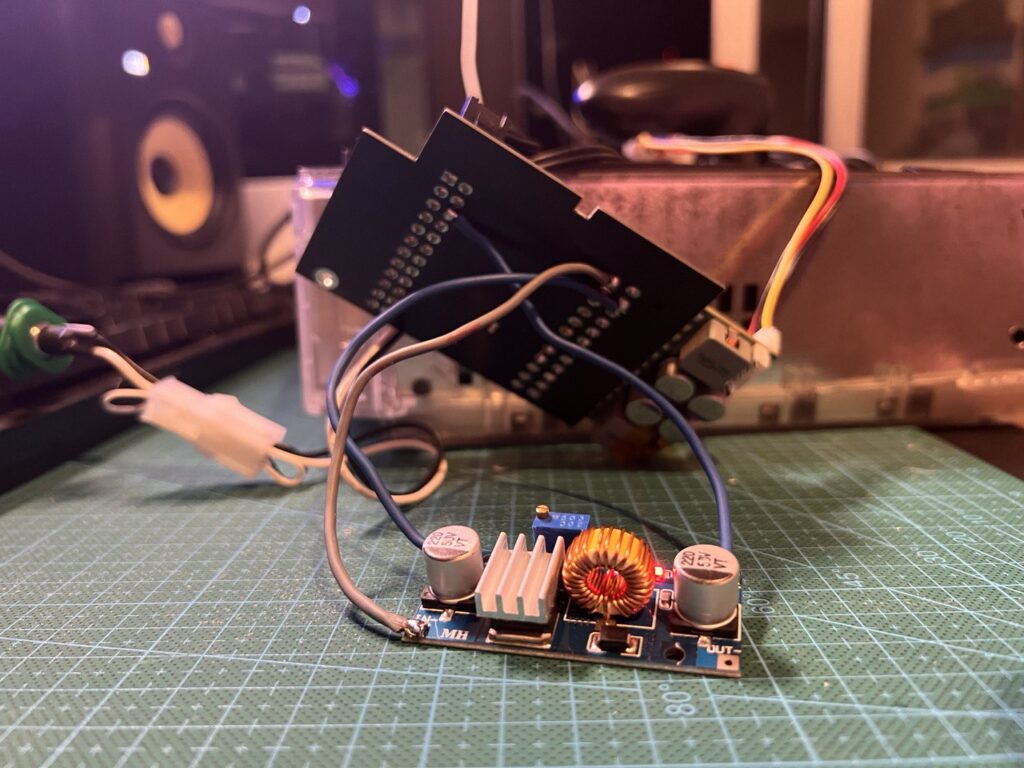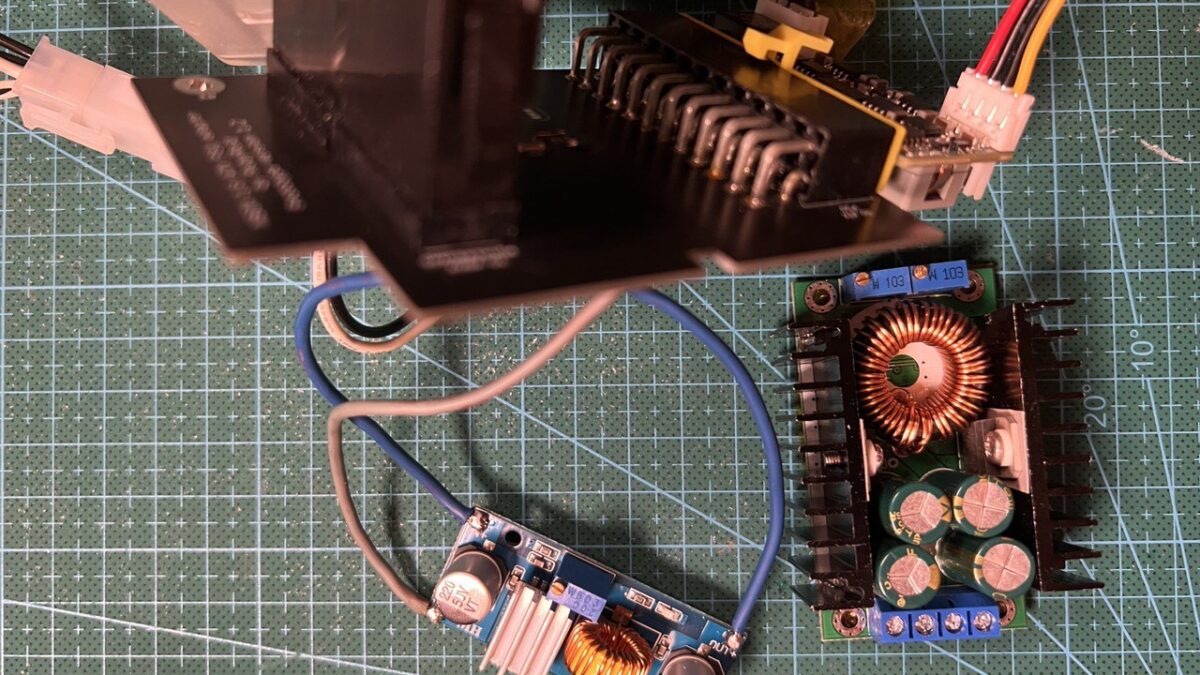It’s time for an update on the adapter board development.
While I’m still waiting for new prototype boards to arrive, I’ve managed to get several DC-DC step-down converters and test them with my current adapter version.
As I mentioned in the original blogpost, the main issue with PicoPSU was that it can’t supply enough power on 5V rail so my Xbox did sometimes unexpectedly shut off during gameplay.
The idea was to take power from 12V rail and convert it to 5V using a converter. I did have some prior experience using such converters in my 3D printer although those were designed for much smaller currents.
So I was browsing Amazon looking for converters which would be able to handle higher currents and found two promising options: first one for 5 Amps and another for whopping 9 Amps of current. I didn’t know which one will do the job better, so I simply got both.
I started my experiments with a more powerful converter. It has two adjustable potentiometers: first one adjusts output voltage and the second one adjusts output current. I adjusted it to output 5V, soldered it to the adapter and turned on the console.

It worked! I measured the output current and it was between 1.4 and 2.0 Amps. I tried to adjust the second potentiometer but it wouldn’t change anything. I think that’s because the output current was below the minimum limit.
I could play Halo 2 for at least half an hour and there were no issues at all. The only concern was that the DC-DC converter became pretty hot but that’s normal for such converters from what I could find online.
The only thing I didn’t like about this converter is its size: it is pretty bulky with large radiators on both sides and fitting it inside the Xbox could be an issue.
So I tried a smaller and less powerful converter next. It did have just a single potentiometer for output voltage adjustment. When I connected it I saw the same output current as with the first one. It seemed like it could handle the load just fine. I launched Halo 2 and spent a good hour playing it. Once again, I didn’t see any issues apart from the converter getting pretty hot to touch, which should be fine.

I performed all tests with my adapter and DC-DC converters outside of the Xbox, so next I’ll need to see how it performs when installed into the console and if it overheats or not. I don’t want to put a fan on it as it would make the whole setup bulkier and more expensive to produce. But I feel like it will be fine as it is now.
I did also redesign the adapter board to make the DC-DC converter installation very easy: it now has four posts added to mount the converter above the board. I could have reverse engineered the converter and put the components on the board itself but I didn’t want to bother with it at this stage. I’ll see how it works first and if it is alright I may consider doing it in the future. I haven’t ordered this new design yet as I’m waiting for my current order to arrive. It’s got some dimensions adjusted and I want to see if it fits fine before ordering the next iteration.

I also ended up buying another Xbox 1.6 for tests. I need it to confirm that my adapter outputs same levels as the original PSU as it is the only way to confirm that it is safe for longterm use. I didn’t have a chance to perform the measurements but I will do it soon.
I’m surprised that it was so easy to overcome the issue with PicoPSU not providing enough power on 5V rail. My Xbox works just fine which makes me very happy!
Thanks for reading and I hope to have more updates on the project very soon, so stay tuned!
Please don’t forget to join the waitlist if you’re interested in getting an adapter once it is complete.

